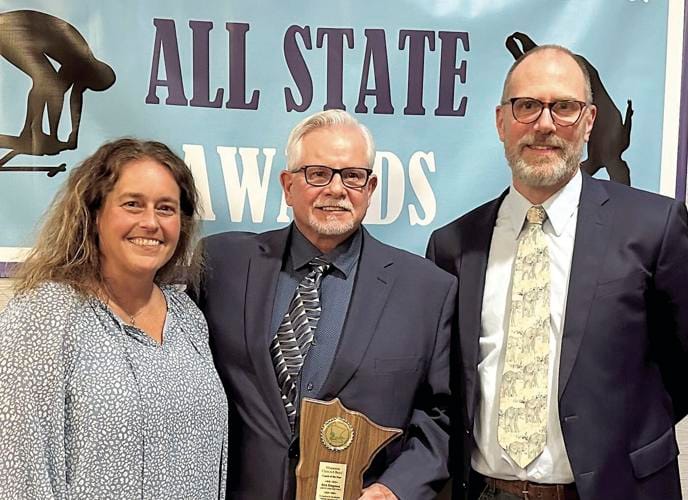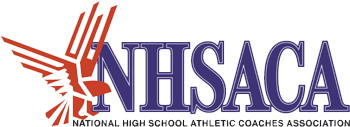The Evolution of Coaching Prep Sports

By: Rick Ringeisen, MSHSCA Executive Director
Coaching prep sports has undergone an evolution over the last six decades. Many changes have taken place, some suddenly and others gradually. I am going to share my observations and some of the impacts that have occurred over the years. Many of the things I mention are monumental and deserve to be heralded, others are less important, and others have resulted in unintended consequences for coaches and programs. The timing of the progression I describe below varies within our communities across Minnesota and the United States. However, all of the evolutionary changes have taken place, to varying degrees. I am sure for many, what follows will bring back memories of your own athletic and coaching journey.
In the nineteen-sixties and seventies, the sports offered were more limited, and there were no participation fees. There were only boys’ sports, and the coaches were almost all male teachers on staff at our schools where they coached. Most also coached multiple seasons, and the sports they could coach were one of the key factors in their hiring. I remember being in junior high and feeling that it was unfair that the girls who enjoyed playing sports at the playgrounds with us were left out and couldn't participate in school sports. They were only allowed to participate in the GAC (Girls’ Athletic Club).
There was fierce competition for teaching jobs. In 1979, when I interviewed for my teaching position, I was told that there were over 350 applicants for the position. Today, schools are lucky if they get a dozen qualified applicants. Hiring a qualified teacher for the opening is the priority, and if a candidate is willing to coach a season, it is a huge bonus. When I was interviewed, what I could coach and how many seasons figured prominently in hiring decisions. Hiring quality coaches was a priority, and as communities and schools became increasingly serious about sports, they started recruiting and hiring excellent coaches away from other schools.
The nineteen-sixties were a tumultuous time in America. The women’s rights movement was gaining momentum, making progress, and garnering support for equal rights. The Vietnam War was raging and became increasingly unpopular. There were anti-war and civil rights protests that sometimes turned into violent riots in our cities. All three movements soon accomplished varying levels of social change. The most significant for athletics took place the summer before my sophomore year in high school, on June 23, 1972. President Nixon signed Title IX of the Civil Rights Act. Today, we know that Title IX extended athletic programs and opportunities to girls in high schools and women in colleges. In a few short years, the passage of Title IX doubled the athletic program, requiring more facilities and nearly twice as many coaches. This monumental change also opened the door for women to join the high school coaching ranks in significant numbers.
The passage of Title IX didn’t result in instant respect, access to the best facilities, and equal budgets between the boys’ and girls’ programs. The 1970s were the decade when girls’ sports fought for and gained recognition and respect. Progress varied significantly from one community to another. It was also the time when multiple-sport athletes were the norm and powered school athletic programs. Gradually, in the late seventies and into the eighties, athletes began to specialize. This movement resulted in the development of off-season training programs and athletes being trained by coaches outside their in-season coaches. Summer camps for specific sports became popular, and the cost of those camps increasingly became more expensive. Parents began spending significant amounts of money to have their children trained by specialized coaches during the off-season. The additional investment of time and money also brought higher expectations.
In the eighties, participation fees became the norm, and the vast majority of coaches were still primarily hired from the school teaching staff. Some head coaches began welcoming volunteer coaches from outside the school staff to join their staff. The addition of volunteer coaches improved the coaching ratios and provided an infusion of knowledge and passion. Those coaches wanted to give back to the sport that gave them so much and positively impacted their lives. As schools added sports programs, it became increasingly challenging to continue hiring all the assistant coaches from the teaching staff. Gradually, more and more assistant coaches were hired from the private sector. At that time, very few people had flexible work hours, and for those coaches to be available in the early afternoon, they had to make compromises and have understanding employers. In the late eighties, team fundraising became an annual necessity to cover expenses, and the pressure to fundraise has only increased over time. Only now, teams are fundraising to cover nearly every expense and pay their coaches.
In the mid-to-late 1990s, athletes began to have parents who participated in both high school and college sports. As a coach, I noticed that in some families, when both parents were athletes, it became challenging for my athletes to go home after games and deal with parents who both wanted to criticize their performance. By the end of the nineties, athlete participation fees were no longer nominal and began to impact family budgets, and for some, limited the number of sports athletes participated in each school year. Coaches from outside the school staff became more common, and some were starting to fill head coaching positions. Hiring committees with parent members became more common for head coach positions. Parents began to flex their clout in the hiring and firing of coaches.
From 2000 onwards, the hiring of both assistant and head coaches from the private sector became necessary at all levels and in most sports. Coaches also began to move from one season to the next at different schools. Sometimes, coaching at a different high school each season. Since the COVID pandemic, the hiring of coaches from the private sector has risen to such a high degree that in some schools, the vast majority of the coaching staff are from the private sector and not employed as teachers or in other school district positions. The unforeseen unintended consequence of this hiring practice is that school districts are dropping the coaching salary schedule from the teacher contract, leaving coaches to negotiate their compensation with their school district. Edina and Farmington no longer negotiate the coach salary schedule as part of the teacher contract, and other school districts across the state are also considering the same course of action.
As we approach the midpoint of the 2020s decade, a teacher shortage has emerged, which in turn means a coach shortage is also present. Is there really a shortage of new graduates qualified to become teachers? The answer is no. What we have is a shortage of people willing to take on the responsibility and workload of being a teacher for the current starting pay. One of the most fortunate factors I have noticed is that we now have more long-time, successful veteran coaches continuing to coach long after they retire. Those coaches share a passion and love for their sport and are now tremendous mentors of the younger generation of coaches. One of the most significant challenges prevalent in high school sports is that coaches of teams that involve playing time, are under greater pressure and are being attacked at a significantly higher level than ever before, resulting in high head coach turnover.
In response to the significant turnover of head coaches, the MSHSCA is conducting a study to gather data on head coach turnover. When the analysis is completed, the MSHSCA will share the data with the MSHSL and the MNIAAA (Activities Directors Association), with the hope of working together to inform the public and raise awareness of the challenges coaches face in today's world. The data will also be shared with the MSHSCA membership in the September issue of the Prep Coach.
Every coach knows that being a coach is a full-time job for part-time pay. No one is coaching because the pay is excellent; in fact, most coaches give up income to coach and sacrifice quality time with their family and friends. Yet the challenges and hardships more than make up for in the intrinsic value of the contributions they make in helping their athletes reach their full potential as quality individuals. There is no greater title of respect than to be called a coach! You are exceptional! Now that the school year is behind us, it's time for you to take time for your family and yourself. Recharge and make the most of your summer programs to build for next year. I hope you all find your own inner peace and make the most of this summer!

Member discussion